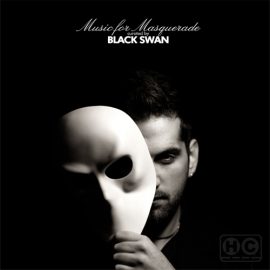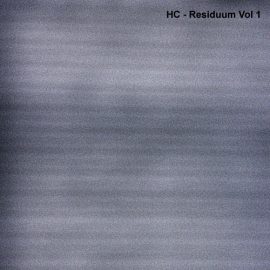If you are somewhere between the ages of 16 and 24 (or if you have kids within that range) than you’re already familiar with TikTok. The social media platform, launched out of Bejing in 2012, has captured an entire generation of content creators with short music videos, lipsync dancing, comedy clips and even magic, each at about 3 to 60 seconds in length. And if you’re an old geezer like me, then you’re probably an Instagram user, which, may I remind you, has been purchased by Facebook (the same year of 2012), and has, throughout the years, turned from a photo-sharing to a live-streaming platform and beyond. During the COVID-19 pandemic, the usage of both platforms has sky-rocketed, and the tensions between the US and China has prompted one primate to suggest and ban the use of TikTok from his country. Instagram then made a move to unveil Reels, its answer to the format, in hopes to dominate the audience and capture market share. It’s what it did with Twitter‘s Vine, which it subsequently choked out and smothered out of business, the way some climbing vines choke out a tree.
All of this is great, Mike, but why are you wasting my time with this?
Well, there’s something very interesting that lies at the heart of these platforms. Both TikTok and Instagram’s Reels are mostly centred around a music video clip – that is, a video recording set to someone’s music. In some cases, the music [or the talking] is original. But in many others, you’ll find a teenager lipsyncing to a track. And have you heard these tracks? Oh, geez, don’t get me started. But the most interesting point here is that the copyright laws (of the US and Europe) do not reach out into China, or, if they do, it turns into a pretty nasty international debate, which usually both parties attempts to not engage in. So if you poke around TikTok, you’ll find that most clips feature tracks of unfamiliar ‘underground’ artists. Or those that have released the music into the TikTok platform on their own. On paper, TikTok officially licenses snippets of these songs, but I’d like to understand from whom and how.
So what about Instagram?
Ah, now it gets interesting. If you notice, Instagram’s Reels allow you to pick a track to make a reel with, from its rather extensive collection of music. In fact, that catalogue resembles closely that of Spotify, Tidal, Apple Music, Pandora, YouTube, and… Facebook, of course. If you’re an independent artist or a label, then you are already familiar with the digital distribution choices offered by some platforms (like CD Baby or DistroKid) that make your tracks available on all of the above. And that’s how it ends up on Instagram as well. And now, the kids can pick your tune, and show off their new costume or an eye shadow.
Oh cool, so… that means that I get paid for each play, right?
Well… not so fast, lone starving artist. This is exactly the reason why Facebook and Instagram have limited the playtime to only 15-seconds. There is this copyright provision in the law that allows one to play a short clip of music for “fair use” without prior licensing or compensation. I mean, you didn’t really expect Facebook to pay you, did you? But this “fair use” has a bunch of loose interpretations in its measure. The purpose of it has to be for non-commercial, not for profit, and not for the marketing of other services or goods. And this is where the provision kind of just trails off…
Oh, okay, so dancing kids do not make real money…
Well… I’m not so sure about that. These influencers are the next in marketing advancement. A large cosmetics corporation (think L’Oréal) engages an Instagram account that has a huge following, sends over makeup samples [and if the influencer smart, it pays some cash!], and then the product gets “advertised” to a huge audience. You know the deal. Along the way, in the 15-second clip, your pretty piano piece got used, essentially to soundtrack an ad. If this was on TV, I guarantee you’d get a proper payout. But kids don’t watch TV – they scroll through TikTok. And your tune? Well, it sort of fell into a loophole of its own. And while you’re busy complaining about a sub-penny payout from a music streaming platform, another one has truly ripped you off. I think I made my point.
So what can I do about that?
Honestly, at this point, I don’t know. I only started looking into this when Instagram launched Reels back in August. I thought about this issue first appearing in TikTok, but as I said, Beijing is far, and most American and European corporations do not engage with China to avoid unnecessary conflict. Meanwhile, in April of 2020, there was this article in FT, where numerous music companies threatened to sue TikTok over copyright:
Universal Music has been in licensing negotiations with TikTok for the past year as the world’s largest music company looks to extract more money from the social media app as its user base balloons. However, Universal Music’s publishing arm still does not have any licensing agreement in place with TikTok. This means that Universal’s songwriters, which includes Billie Eilish, Lady Gaga, Elton John and Taylor Swift, do not get paid royalties when their songs are inserted into TikTok videos.
So what about Instagram? Facebook is a growing monster, with not just Instagram, but also WhatsApp in its grip. And we all know that Facebook has some cash to spare. So it’s not like it needs a little boost, in order to expand the platform to another group. I think it’s consciously circumventing laws to gain an edge here. Unless I’m tripping, and you’re going to tell me that I’m full of crap and that for every single 15-second loop you get some $0.00042 profit. I don’t know about you, but I haven’t seen any royalties from Facebook, while YouTube, Amazon, and Spotify accumulate a little every month.







